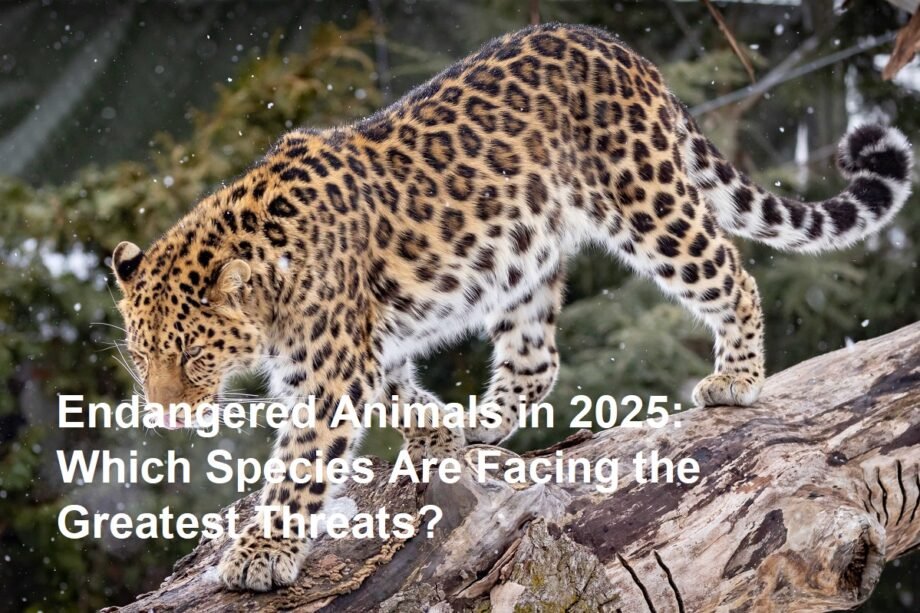Introduction
As we move further into 2025, many animal species continue to face severe threats to their survival due to habitat loss, climate change, poaching, and human activity. Understanding which animals are endangered today is essential for raising awareness and promoting conservation efforts worldwide. This article highlights some of the most critically endangered and endangered species in 2025 and explains the factors that contribute to their precarious status.
What Does It Mean to Be Endangered?
An endangered species is one that is at a very high risk of extinction in the wild. Conservation organizations such as the International Union for Conservation of Nature (IUCN) maintain the Red List, which classifies species based on their risk of extinction — from vulnerable to critically endangered. The urgent goal of many environmentalists and governments is to protect these species from disappearing forever.
Critically Endangered Species in 2025
Several animal species are listed as critically endangered, meaning their populations have declined drastically or are extremely small. Some notable examples in 2025 include:
- Amur Leopard: Native to the Russian Far East and northeastern China, the Amur leopard population is estimated at fewer than 100 individuals in the wild. Its habitat is threatened by deforestation and human encroachment.
- Vaquita: The vaquita, a rare porpoise inhabiting the northern part of the Gulf of California, is considered the most endangered marine mammal. By 2025, fewer than 10 individuals are believed to remain due to bycatch in illegal fishing operations.
- Javan Rhino: Found only in Indonesia’s Ujung Kulon National Park, the Javan rhino population is critically low — around 80 to 90 animals — threatened by habitat loss and poaching.
Other Endangered Species to Watch
Beyond critically endangered species, many other animals face significant threats:
- Asian Elephant: These majestic creatures are endangered due to habitat fragmentation, human-wildlife conflict, and poaching for ivory and meat.
- Orangutans: Native to Borneo and Sumatra, orangutans suffer from deforestation, largely driven by palm oil plantations, which destroys their forest habitats.
- Hawksbill Turtle: This sea turtle species faces threats primarily from illegal trade of their beautiful shells and loss of nesting beaches.
Causes Behind Endangerment
Several human-driven and natural factors contribute to species endangerment:
- Habitat Destruction: Logging, agriculture, urbanization, and mining fragment and eliminate natural habitats, leaving animals with fewer places to live and breed.
- Climate Change: Changes in temperature and weather patterns affect ecosystems, food sources, and breeding cycles, impacting species survival.
- Poaching and Illegal Trade: Demand for animal products like ivory, skins, exotic pets, and traditional medicines leads to unsustainable hunting.
- Pollution: Water, air, and soil contamination hurt animals directly or degrade their habitats.
Importance of Conservation Efforts
Conserving endangered animals is vital for maintaining biodiversity, ecosystem stability, and overall planetary health. Various international treaties, national parks, wildlife sanctuaries, and grassroots campaigns are working to protect species and their habitats. Public awareness and responsible consumer choices also play a significant role in conservation success.
Trustworthy Information and Expertise
This article draws from up-to-date information sourced from the International Union for Conservation of Nature (IUCN), World Wildlife Fund (WWF), and conservation studies by leading wildlife experts. These sources ensure the reliability and accuracy of data about endangered species.
Conclusion
The year 2025 continues to reveal the fragility of many animal populations worldwide. The critically endangered Amur leopard, vaquita, and Javan rhino underscore the need for urgent conservation action. Other endangered species like the Asian elephant and orangutans also remind us of the ongoing challenges that biodiversity faces. By understanding these issues and supporting conservation, we can help protect endangered animals for future generation








